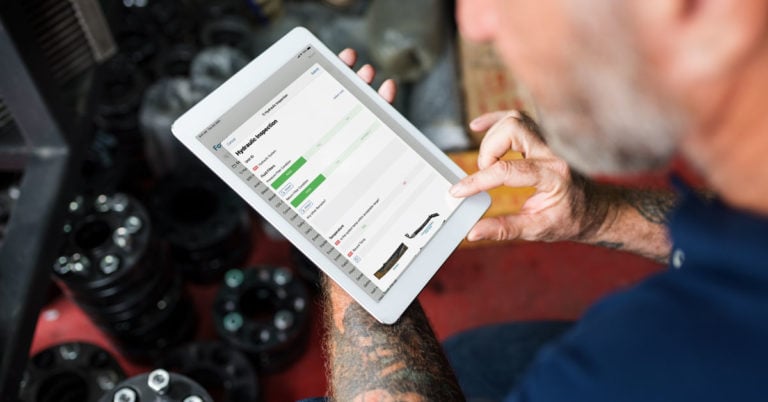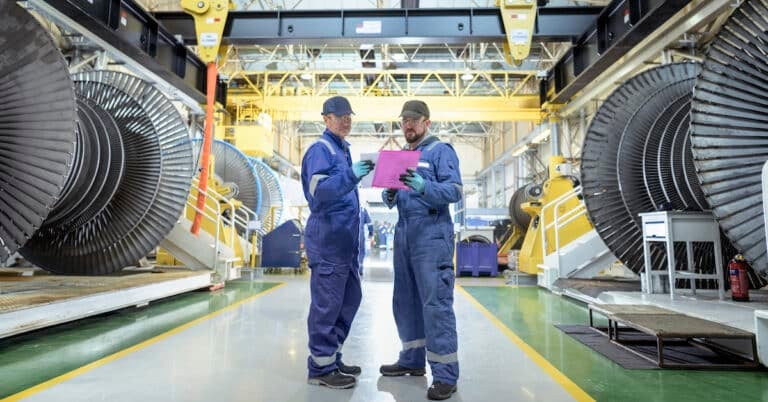All rotating machinery needs some form of lubrication to function properly and reduce wear. One part of a rotating machine that often requires lubrication is the journal bearing. There are many benefits to properly lubricating journal bearings. Lubrication extends the life of the bearing by reducing wear and tear, and it also helps protect the bearings from corrosion. To get the most out of your journal bearings, it is important to use the correct type of lubricant and apply it correctly. In this blog post, we will give you a basic introduction to journal-bearing lubrication. Stay tuned for more tips on how to keep your bearings running smoothly!
What is a Journal Bearing?
Journal bearings are among the simplest types of bearings. It allows shafts to rotate freely inside supporting shells or sleeves. The journal is the part of the shaft that fits in the bearing. It also does not have any rolling elements, unlike roller bearings and ball bearings. As such, it only supports radial loads. Despite their simplicity, these bearings increase the service life of many systems and come at a relatively little cost. Many industries use journal bearings because of their simple design and manufacturing requirements, making them one of the most popular types of bearings.
Types of Journal Bearings
Two-Piece Journal Bearings
As their name implies, two-piece journal bearings consist of two halves. These halves or “shells” help to hold large diameters together, such as crankshafts. During operation, it is common to use a dowel to prevent the bearing from moving. Two-piece journal bearings consist of two halves that are slightly larger than their housing, similar to roller and ball bearings. It is important to compact the shells at installation, as this creates a radial force that prevents the bearing from spinning.
Integral Journal Bearings
Integral journal bearings or integral plain bearings are incorporated into the object. A highly common integral bearing is a pillow block bearing. In pillow block bearings, the bearing surface is a chromium steel alloy, and the housing is usually cast iron. This type of bearing often has a grease nipple to maintain proper lubrication.
Bushing Journal Bearings
Bushings are mechanical components fitted inside housings, normally by interference fitting. This provides a bearing surface. Sizes of housings and shafts will determine the required bushing internal and external diameters. In most cases, bushings are sleeved and either plain or flanged.
Common Lubrication Regimes of Journal Bearings
During equipment startup and shutdown, journal bearings often operate in the boundary lubrication regime. This means that the shaft’s rotational speed is inadequate to form an oil film, and metal-to-metal contact results. Nearly all journal-bearing damage happens at startup and shutdown. To avoid this kind of damage, you can float large, heavy journals before startup using a hydrostatic lift produced by an externally pressured oil feed.
After startup, it shifts to the hydrodynamic lubrication regime. The shaft rotates quickly enough during normal operation to push oil between the conforming curved surfaces of the shaft and shell. This creates a hydrodynamic oil film and an oil wedge. When in the hydrodynamic regime, these bearings can sustain exceptionally heavy loads and function at high rotational speeds. Common surface speeds range from 30,000 to 50,000 feet per minute (or 175 to 250 meters per second). Since lead and tin babbitt can withstand temperatures of up to 150°C (300°F), the lubricant used is frequently what regulates temperature.
Pins and Bushings
The shaft or shell typically does not complete a full rotation when using low-speed pins and bushings as a journal bearing. Because a full fluid film cannot form during the partial rotation at low speed before the typical direction change, metal-to-metal contact does take place inside the bearing. So, pins and bushings are always in a boundary lubrication regime. You can use extreme pressure (EP) grease to lubricate these kinds of bearings to help them support the load. To increase the grease’s capacity for carrying loads, solid molybdenum disulfide (moly) is an excellent additive. You may find pins and bushings in numerous construction and mining equipment applications. As a result, important factors in their lubrication frequently include shock loading and water and dirt contamination.
Dry Journal Bearings
Dry journal bearings consist of a shaft rotating within a dry sleeve. The sleeve is usually a polymer along with molybdenum, graphite, nylon, or PTFE (polytetrafluoroethylene). The bearings are only suitable for low loads and low surface speeds.
Semilubricated Journal Bearings
In semilubricated journal bearings, a shaft rotates inside a sintered bronze or aluminum porous metal sleeve that has lubricating fluid trapped inside its pores. These bearings are only suitable for light loads, slow to moderate speeds, and temperatures up to 100 °C (210 °F).
When to Lubricate with Oil vs. Grease
When cooling is necessary or debris and contaminants need to be flushed out of the bearing, you should use oil. Never use grease to lubricate high-speed journal bearings; always use oil. A wick, an oil ring or collar, or a pressurized oil pump system can all be used to supply oil to the bearing. The oil is dispersed across the bearing surfaces using grooves in the bearing shell.
You should lubricate with grease when journal bearing cooling is unimportant, often when the bearing runs at very modest speeds. If the bearing experiences shock loading, regularly begins and stops, or reverses direction, grease is particularly helpful. Because grease is a thicker lubricant than oil and can withstand static loads as well as guard against vibration and shock loading, which are frequent in many of these applications, grease is nearly always used to lubricate pins and bushings. The most popular thickeners used in greases are lithium soap or lithium complex thickeners, and they work well in most journal-bearing applications.

Don’t Underestimate the Power of Proper Lubrication
The operation and lubrication of journal bearings can be complicated, despite the simplicity of their design and construction. Additionally, you should check your lubrication right away if a bearing fails. The cause of 43% of mechanical failures, 70% of equipment failures, and 50% of roller bearing damage is improper lubrication. The issue isn’t always just under lubrication. There are many factors of proper lubrication, especially when it comes to different types of bearings. Click here to learn more about the common causes of bearing failure and how to prevent them.


